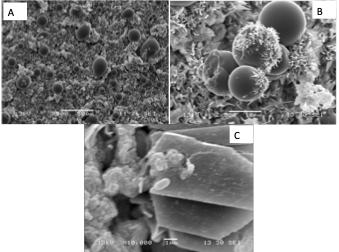 |
|
Currently, the interest of the food industry on the use of probiotics in order to provide beneficial effects is increasing. However, one limitation is getting microorganisms to survive in food matrices. In this work, protective effect of exopolysaccharide produced by Lactobacillus delbrueckii subsp. bulgaricus NCFB 2772 on Lactobacillus rhamnosus GG survival during semi-ripening of cheese, was analyzed. Ripening was carried out at 14 ° C for 28 days in a controlled RH chamber. Scanning electron microscopy (SEM) was performed to determine interactions of probiotic with the exopolysaccharide. During ripening process, the proteolytic activity was determined through TNBS, SDS-PAGE and size exclusion-HPLC techniques. Viability of probiotic was measured by plate count. Cheese inoculated with both strains showed an improvement in probiotic survival. Exopolysaccharide was shown to have an effect on protein aggregation and cheese structural uniformity. Micrographs revealed a direct interaction between probiotic and exopolysaccharide. Proteolytic capacity did not decrease, and the generation and decrease of low molecular weight peptides (less than 3 kDa) was verified throughout the ripening process. Thus, using an exopolysaccharide-producing strain during cheese ripening has a positive effect on probiotic survival when they are used as starter cultures.
Keywords: Probiotic, exopolysaccharide, semi-ripened cheese, proteolytic activity.
|
|
 |

